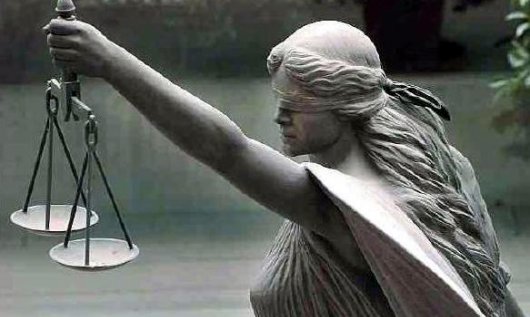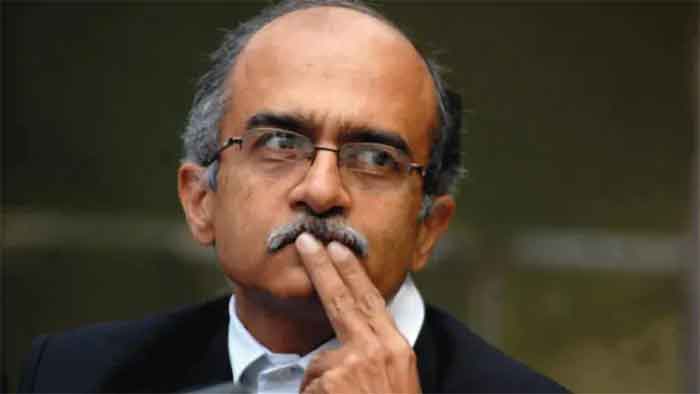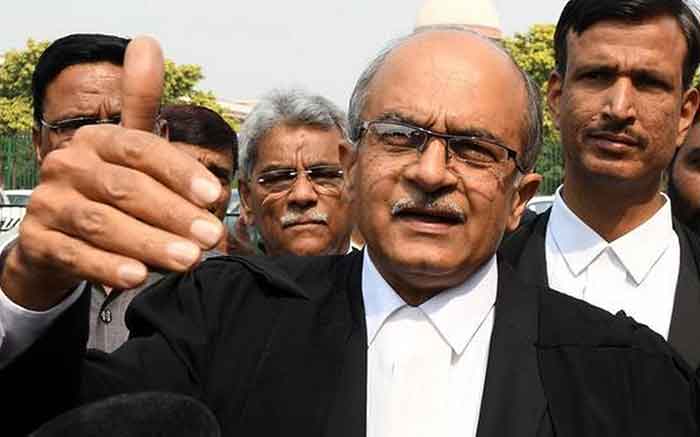
On Aug 14, 2020, a three-judge Bench headed by Justice Arun Mishra found two tweets by lawyer and social activist Prashant Bhushan amounting to “serious contempt of court”.
One of his tweets was about the role of the last four Chief Justices of India, and the other about the current CJI riding an expensive motorcycle while the court was in “lockdown”. While Bhushan later expressed some regret, the Bench held that the latter tweet was not against the CJI in his individual capacity but as the head of the judiciary.
The Bench took exception to the “lockdown” remark and said that from March 23 to August 4, its various Benches had 879 sittings and heard 12,748 matters. The court refused to accept his tweet as written out of anguish.
As to the other tweet, the court held it tends to give an impression that the highest constitutional court of the country has in the last six years played a vital role in the destruction of Indian democracy. “There is no matter of doubt, that the tweet tends to shake the public confidence in the institution of judiciary… the said tweet undermines the dignity and authority of the institution of the Supreme Court of India and the CJI and directly affronts the majesty of law,” it Bench said.
It rejected the argument that the tweet was only a matter of opinion, although several experts including former Supreme Court judges have said or written similar things.
I am listing one score incidents within and without where the judiciary in general and judges in particular were more stridently crucified. Very strong words bordering abuse like cheats, fools, enemies of the people, ass, manupilator of the roster, sealed cover of India, unelected tyranny, judges who know the law minister, pre-retirement judgments for post-retirement jobs, anti-social elements, foreign exchange violators, bride burners, reactionaries, self serving, double standards, malicious, corruption, nepotism, favouritism, failing democracy, rascal, rogue, more executive minded than the executive … were liberally used.
Not a single one of those pungent attackers was punished for contempt. Compared with the following listed criticisms, Prashant Bhushan’s charges pale into insignificance. Yet the learned judges found two tweets by lawyer Prashant Bhushan amounting to “serious contempt of court”.
List of charges against judiciary and judges
The American Supreme Court in what was believed to be a decision on political party lines, declared George W Bush as the President of the USA. The bitterly fought controversial presidential election in the year 2000 eventually went to court which rendered its verdict in Bush vs. Gore. In a critique on the judgment, Alan Dershowitz, one of the country’s most renowned attorneys, began with the words, ‘The Supreme Court Judges are cheats’.
After the celebrated Spycatcher judgment was delivered in the late 1980s by the House of Lords, the British tabloid, the Daily Mirror, published an upside-down photograph of the Law Lords with the caption, “You Old Fools”. Refusing to initiate contempt action against the newspaper, one judge on the Bench, Lord Templeton, reportedly said, “I cannot deny that I am Old; It’s the truth. Whether I am a fool or not is a matter of perception of someone else.. There is no need to invoke the powers of contempt.”
Even when, in 2016, the Daily Mail ran a photo of the three judges who issued the Brexit ruling with the caption “Enemies of the People”, which many considered excessive, the courts judiciously and sensibly ignored the story, and did not commence contempt proceedings.
Justice S.P. Bharucha’s response to Arundhati Roy’s criticism of the Supreme Court for vacating the stay for constructing a dam: Although holding that Ms. Roy had brought disrepute to the Court, nothing further was done, for “the court’s shoulders [were] broad enough to shrug off [these] comments”.
It was pointed out in the landmark U.S. case of Bridges v. California (1941), “An enforced silence would probably engender resentment, suspicion, and contempt for the bench, not the respect it seeks”.
Lord Denning was considered to be the most celebrated English Judge of the 20th century. In the British Steel Corporation versus Granada Television case in 1981, Lord Denning, who was the president of the Civil Division of the Court of Appeal, commented that “in order to be deserving of freedom, the press must show itself worthy of it. A free press must be a responsible press. The power of the press is great. It must not abuse its power.”
Denning’s remarks triggered an uproar as they were considered as an insult to the freedom of the press. The media waged a united protest against the judges. Some senior politicians joined them. Labour Party MP Michael Foot, one of the most principled British politicians in his era and leader of the opposition in the House of Commons at that time, had blasted Lord Denning for his remarks. He even commended: “Denning is an ass.” The Observer ran a report under the headline: “Why Denning is an ass?”
In an interview to Tehelka by Prashant Bhushan in 2009, he alluded to corruption by six former Chief Justices. The Supreme Court of India did not crumble in the last 11 years after the criticism.
During the reign of Chief Justice Deepak Mishra, four senior most Justices of the court held a public press conference impliedly accusing the Chief of manipulating the roster and thereby insinuating that cases were being assigned to preferred benches in a manner so as to bring about a desired result. There couldn’t be a more serious indictment of the institution, considering that a press conference of this nature was unprecedented in the annals of judicial history in any democracy the world over. One of the four Justices was Ranjan Gogoi, who later became the Chief Justice.
CJI Ranjan Gogoi brought in the jurisprudence of the ‘sealed cover’ as a means to arriving at a decision. Supreme Court of India has rightly earned the epithet ‘Sealed Cover of India’.
Essar Tapes: Notorious for alleged phone conversations between top political and corporate power brokers of India. These conversations, apparently, were recorded during NDA-I tenure. Two such conversations: (i) A Rs 2 crore payment to a Supreme Court judge to get a petition dismissed at the admission stage. (ii) Conversation between a famous industrialist and his company director in 2003 that hints at managing of the ‘Shivani Bhatnagar’ murder case involving a ‘most influential’ Central Minister in Vajpayee Cabinet.
‘Indian democracy cannot be a tyranny of the unelected (the Supreme Court judges)’: Arun Jaitley on NJAC verdict in Oct 2015.
“Pre-retirement judgements are influenced by a desire for a post-retirement job… But this clamour for post retirement jobs is adversely affecting impartiality of the judiciary of the country and time has come that it should come to an end… There are two kinds of judges— those who know the law and those who know the law minister”: Arun Jaitley in Sep 2012.
The Supreme Court’s judgment on sedition in Kedar Nath Singh (1962): A mere scurrilous attack against the courts/judges should not be punished if it does not lead to an actual obstruction of the judicial process.
P. Shiv Shankar (AIR 1988, SC 1208 at 1213), a cabinet minister of the Government of India was exonerated though he had compared the judges of the Supreme Court to ‘anti-social elements, foreign exchange violators, bride burners and a whole horde of reactionaries who have found their haven in the Supreme Court’. The court said that the speech of the minister had to be read ‘in its proper perspective’ and, when so read, it did not bring the administration of justice into disrepute.
Rachapudi Subba Rao (2004): When the execution and the appellant’s application for stay were pending, the appellant on Dec 25, 1974 issued notice to the Additional Subordinate Judge, who had decided the suits against him. In that notice which is a lengthy document, he inter alia made these allegations against the Judge: “In the said judgment your honour created new facts by making third version without evidence as detailed below among others. Your honour has intentionally, with bad faith and maliciously, disordered the existing oral and documentary evidence with a view to help the plaintiff causing damage and injury to me. Your honour has maintained different standards in the same judgment with regard to Exs. B-9, B-10, B-13 and A-15 to A-19 and A-20 to A-22 and B-11 and B-12 in para No. 25. Your honour has maintained different standards even with regard to self-serving statements. Your honour has side-tracked the binding direct decisions of the High Courts and the Supreme Court disordering the contents of the said decisions. So under these circumstances it cannot be said that these acts done by your goodself in the discharge of your honour’s judicial duty within the limits of your honour’s jurisdiction in good faith; for the above said acts themselves prove that your honour has done these acts with mala fide exercise of powers without jurisdiction.”
The Supreme Court had held that criticism of the court that does not impair and hamper the administration of justice cannot be punished as contempt.
During the hearing on Prashant Bhushan’s punishment on Aug 20, Attorney General K.K. Venugopal said, “Five judges of the Supreme Court have said that democracy has failed in the Supreme Court. Secondly, I have nine judges of the Supreme Court saying that there is corruption in the higher judiciary. Two of them made statements while they chaired … Seven of them said so immediately after their retirement. I have extracts from all of them”.
Advocate K K Venugopal (presently the Attorney General) in a speech delivered in 1987 in the Indian Law Institute: “However, like distant thunder, we start hearing rumours of corruption, nepotism and favouritism entering the portals of the courtroom as well. The subject is taboo and like the Chinese monkeys, one does not see, hear or speak of this evil; but if there is a likelihood of this nightmare ever becoming a reality, then it is necessary to hunt down the causes and neutralise the same before it becomes a reality.”
In a 2002 speech, Venugopal went on to then quote retired SC chief justices who, too, had flagged the issue of corruption in the judiciary.
In 2010 Former Law Minister and senior advocate Shanti Bhushan alleged in an application before the SCI that eight of the 16 former CJIs (before Justice K.G. Balakrishnan who retired in May) were corrupt and he provided the eight names to the court in a sealed cover. Since the matter was very sensitive, he wanted the matter to be heard by the Full Court of the Supreme Court by making himself a party.
The application further said: “The judiciary has adopted the policy of sweeping all allegations of judicial corruption under the carpet in the belief that such allegations might tarnish the image of the judiciary. It does not realise that this policy has played a big role in increasing judicial corruption. There was a common perception that whenever such efforts were made by anyone, the judiciary tries to target him by the use of the power of contempt.”
Justice (Retd) Markandey Katju wrote in Jan 2020: “At last the woman employee who was sexually molested by CJI Gogoi and victimised along with her family has been reinstated. There was no vice which was not in Ranjan Gogoi. And yet this rascal and rogue rose to become CJI. It speaks volumes about our judiciary…” Katju also lambasted the “brother and sister judges” of the Supreme Court who, instead of seeking to protect the complainant, protected Gogoi.
“Let us see what the Supreme Court does, but if its recent track record is anything to go by, it will be more executive minded than the executive”: Pratap Bhanu Mehta on Aug 06, 2019 in The Indian Express.
The right course for the three learned judges (who tried Prashant Bhushan’s contempt case) was shown by the great judge V.R. Krishna Iyer in S. Mulgaokar (1978). Iyer had observed that ‘the court is willing to ignore, by a majestic liberalism, trifling and venial offences — the dog may bark, the caravan will pass.’
The Pakistan Supreme Court in July 2020 took notice of ‘objectionable content’ on YouTube and other social media platforms, saying they were filled with content ‘inciting hatred’ against Pakistan’s institutions such as the army, the judiciary, the executive, and so on, and warned that if the content not be removed, they should be banned.
Quoting the above opinion of the Pakistan Supreme Court, Justice (Retd) A P Shah wrote on July 27, “The eerie similarity between the two sets of observations raises concerns about which direction the Indian Supreme Court sees itself heading. One can only hope that these fears are unwarranted.”
Alas the hopes of Justices Iyer & Shah were dashed by the SCI on Aug 14.
Sankara Narayanan is a political commentator from Bhubaneswar.
SIGN UP FOR COUNTERCURRENTS DAILY NEWSLETTER















































